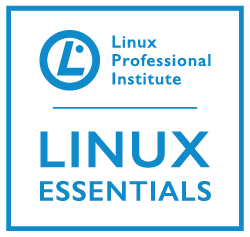The Linux operating system (OS) powers 98% of the world’s supercomputers, most Internet servers, millions of Android devices, cloud platforms, and more. With Linux as the foundation for so much technology and innovation, job opportunities continue to increase in areas like big data, cloud computing, cybersecurity, networking, programming, and software.
This course covers Essential skills for the Entry Level Linux professional that are common across all distributions of Linux. Participants learn the fundamental skills, Commands and approach needed to successfully start using Linux, and prepares them for more advanced Linux System Administration tasks. On successful completion of the course participants receive a Certificate of Course Completion from AFRALTI.
To receive the Linux Essentials certification one must:
- have an understanding of the Linux and open source industry and knowledge of the most popular open source Applications;
- understand the major components of the Linux operating system, and have the technical proficiency to work on the Linux command line; and
- have a basic understanding of security and administration related topics such as user/group management, working on the command line, and permissions.

